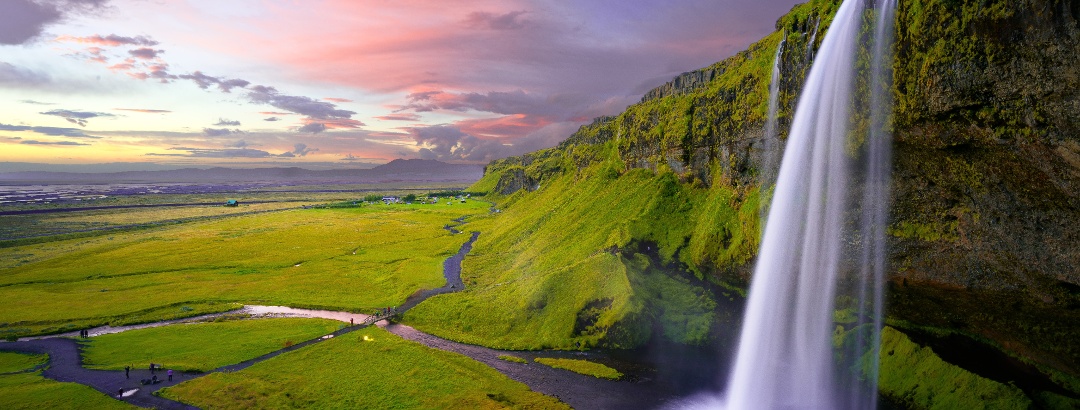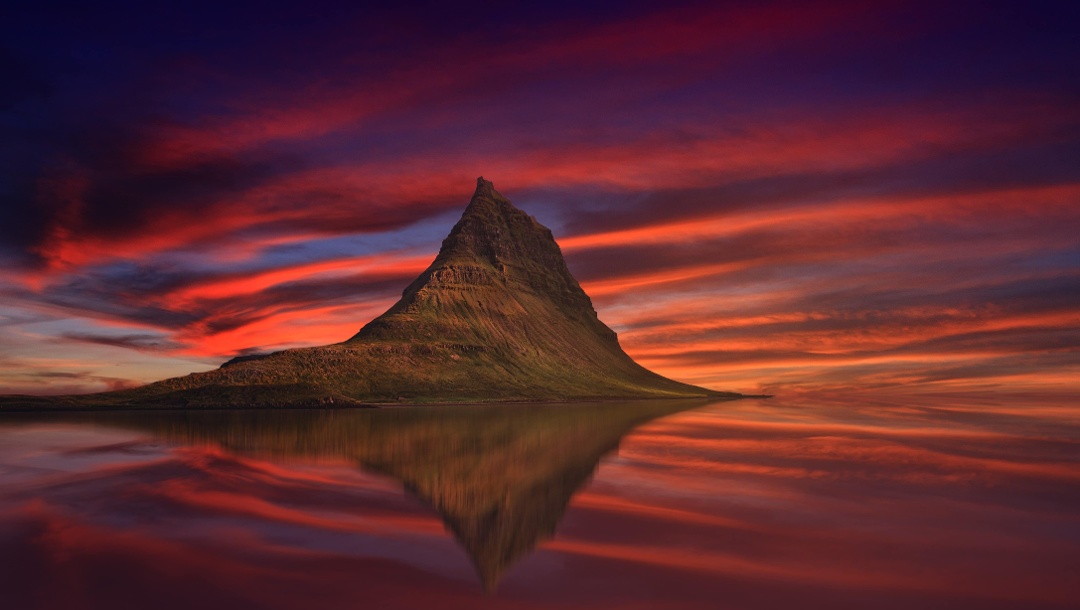Glowing colors and barren rocks, vast emptiness and cultural richness, bubbling volcanoes and sparkling glaciers – Iceland is the land of contrasts. The island is constantly in motion due to its volcanic activity and the drifting apart of the European and North American tectonic plates. And those who visit rarely stay still for long, often setting off on foot, by bike, or on horseback to explore the many treasures of Iceland. It's no wonder that this island of fire and ice is a dream destination for outdoor enthusiasts.
Activities in Iceland
Attractions in Iceland
Highlights
This spectacular multi-day tour takes you about 80 km through nearly the entire range of Icelandic primeval landscapes.
Iceland is hardly comparable to continental Europe: the peaceful and largely untouched landscape exudes a heavenly calm. Numerous craters rise from ...
"Wildly gushing" is the meaning of the Icelandic word gjósa, from which "geyser" is derived. Hardly ...
The hike in Thingvellir National Park follows wide paths through the Almannagja (rock fissure) to the impressive Oxararfoss. But already the entire ...
Gullfoss is probably the most famous waterfall in Iceland. In any case, it is one of the most ...
The cliffs of Látrabjarg are Europe`s westernmost point. In summer, thousands of puffins breed here.
The Whale Museum in Húsavík is the only one of its kind in Iceland, a must-do when traveling to ...
Probably the largest and most fascinating geothermal area in Iceland with reddish colored rhyolite ...
The ski tour to Snaefellsjökull leads along the pass road and then over open slopes to the summit structure, which is completely covered in snow.
The world-famous thermal bath invites you to relax with its fascinating blue water.
Stunning Iceland
What the first Vikings must have thought when they saw the first rocks of Iceland from their ships more than 1,100 years ago? They could hardly have imagined what was hidden beyond the barren coastline. Today, visitors who explore the geysers and glaciers, the spectacular waterfalls, and the cooled lava flows can easily understand why the Vikings believed this land to be the home of elves, dwarfs, and trolls. Even today, around half of the Icelandic population believes in the existence of these magical beings and sees elf houses or trolls in many rocks, petrified by the surprise of the sunrise.
Photo: Outdooractive Editors
Life was hard in 10th-century Iceland: the sea route to the Scandinavian mainland was long, and the young Viking settlements lay isolated between ...
Fantastic Natural Phenomena
Iceland is home to more than 100 waterfalls, some of which are among the largest and most beautiful in Europe. Many of them are surrounded by myths and legends, while others impress with their massive volumes of water and deafening roar.
Iceland is a volcanic hotspot: On average, a volcano erupts here every 5 years. Along the rift zone that stretches across the entire country, there are numerous geothermal areas to explore. Hot springs, bubbling mud pits, and the smell of sulfur characterize these regions. The most famous geothermal spring is the Great Geysir in the south of Iceland, but a trip to Lake Mývatn or the barren highlands is also worthwhile for amateur volcanologists and explorers.
Adventures in Iceland
If you want to explore Iceland's wild beauty on foot, it's best to plan plenty of time for taking pictures. Shorter day trips to waterfalls or lonely lakes often already offer an impressive variety of landscapes, but for many hiking enthusiasts it is trekking routes lasting several days, such as the Laugavegur, that make a trip to Iceland an unforgettable experience.
For those who prefer to be in the saddle, the well-developed Ring Road along the coast offers the chance to battle the wind, or you can venture with a touring bike along one of the trails into the highlands. A new perspective awaits those who explore the island on guided routes from the back of an Icelandic horse. Whether on foot or horseback, after an adventurous journey through Iceland’s wilderness, a soak in one of the country’s hot springs is the perfect way to unwind.
Highlights around Reykjavík
A true trip to Iceland isn’t just about the land, but also the people. You’ll find them best in the capital, Reykjavík, where more than a third of Iceland’s approximately 330,000 residents live. Colorful cafes line the streets alongside cozy seafood restaurants, while numerous museums filled with Viking-era artifacts are often located near fascinating modern architecture. Reykjavík is also an ideal base for excursions, such as to the famous Blue Lagoon geothermal spa or for a whale watching tour out into the North Atlantic.
The world-famous thermal bath invites you to relax with its fascinating blue water.
Iceland in Winter
The high summer is the peak season for outdoor sports enthusiasts in Iceland, when all the paths are easily accessible and average temperatures usually hover around 10°C. However, winter is also becoming increasingly popular among travelers. So close to the Arctic Circle, it’s only light for a few hours a day, until twilight bathes the land in a mystical glow. Even the most visited sights, like the famous Geysir, are often empty during this time and look completely different when covered in snow. With a bit of luck, in the evenings, you might witness a truly spectacular natural display: the Northern Lights lighting up the Icelandic night sky in dramatic colors.
Discover the region
Trip planning
Weather
Getting there
Reviews
Destinations in Iceland
Localization


